For years, I drove by a hawthorn on my way to work. The tree wasn’t particularly striking, but the fine branches were very dense. In fall, however, the tree was covered with bright, red, fruit.
One day I collected some of the fruit, and the following spring I planted them. A handful sprouted and I’m now developing two for bonsai. Here’s one of them.
Young hawthorn
The tree didn’t need repotting, but there was a large root growing near the surface of the soil. It was too big and in the wrong place to be useful so I decided to repot and see if I could reduce it.
Large root
After removing the tree from the pot, I exposed some of the surface soil to see how the root connected to the trunk. It wasn’t pretty.
The big root
It was hard to tell how many of the fine roots emerged from the large root so I removed most of the soil to get a better look. It turns out that the big root was more strange than I expected.
Large twisting root
I tried to separate the roots the best I could to get a better idea of how much of the large root I could remove. I opted to remove all but the first section.
After reducing the large root
The large roots that were removed
I planted the tree in a new container and will let grow freely for a year. In a year or two, when the smaller roots that emerge near the trunk have thickened, I’ll remove the last section of the oversized root.
After repotting
As for the second young hawthorn, I didn’t see any major flaws near the surface of the soil, but I was curious to learn more about what was happening beneath the surface so I decided to take a look.
Another young hawthorn
I started by removing the surface soil to see if any surface roots had developed. I found two large roots that crossed each other and a few smaller roots that emerged above the rest of the surface roots.
Large crossing roots
I removed some of the smaller roots so I could further develop larger roots below.
Small roots emerging above the surface roots
After removing the smaller roots
As I didn’t see additional problems that needed attention, I was able to leave most of the rootball intact.
Root work complete
When the root work was complete, I planted the tree in a new container.
After repotting
I expect the hawthorn with the intact rootball to grow strong this spring. The other hawthorn may slow down a bit. As it’s early in these trees’ development, I’m less concerned with the pace of the growth than the character of the growth.
Subscribe to Bonsai Tonight
New Posts Delivered Every Tuesday and Friday

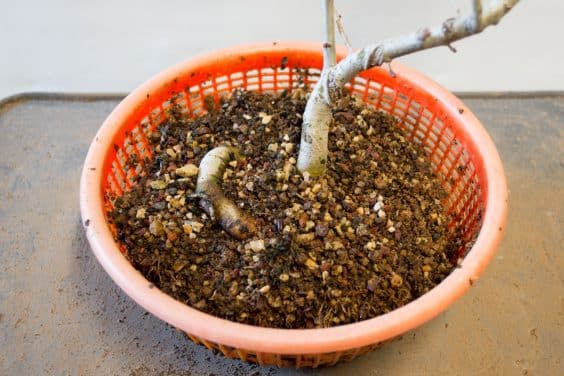
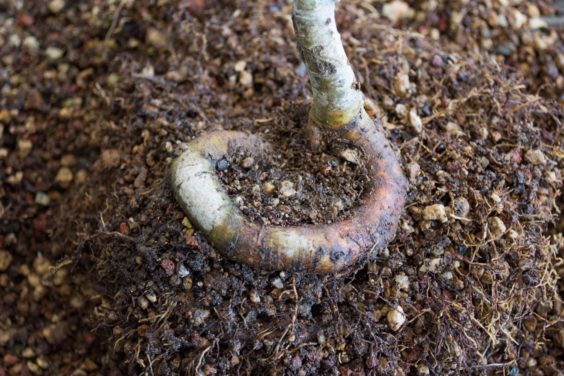
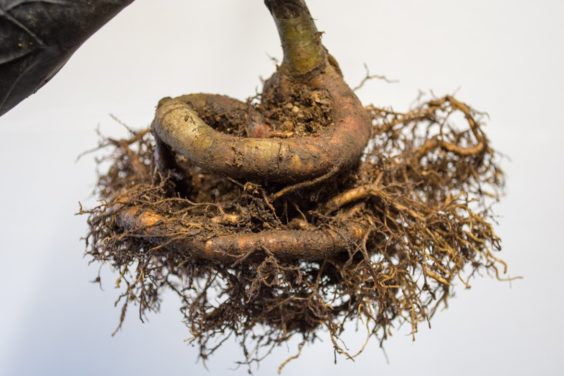
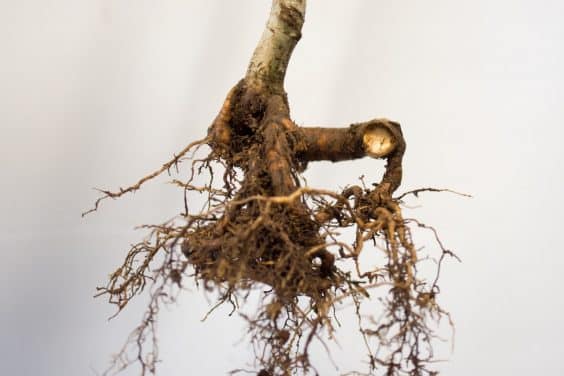
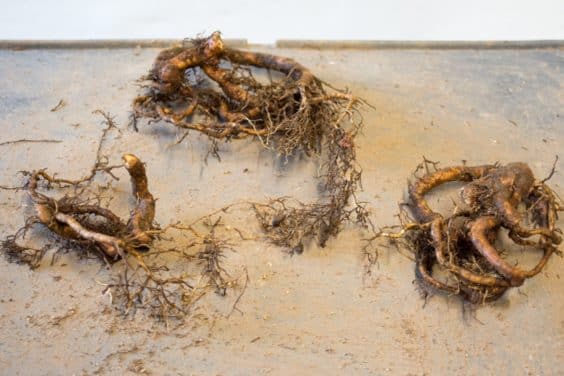
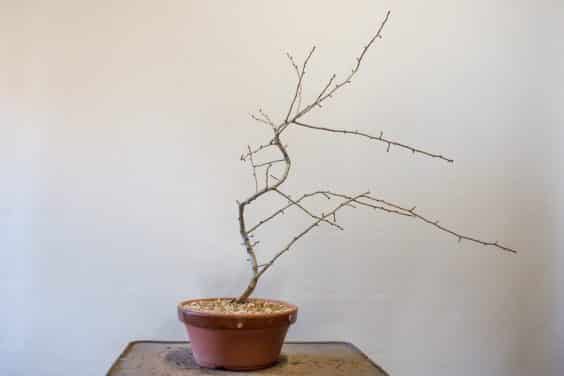
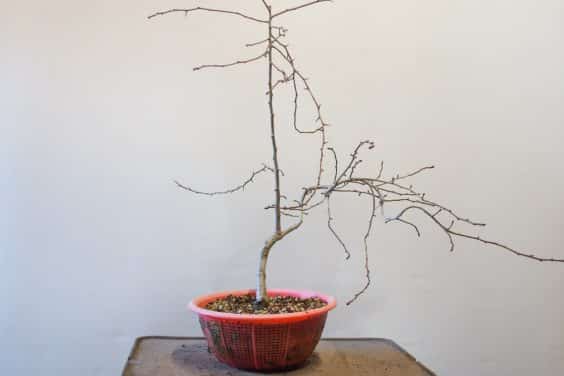
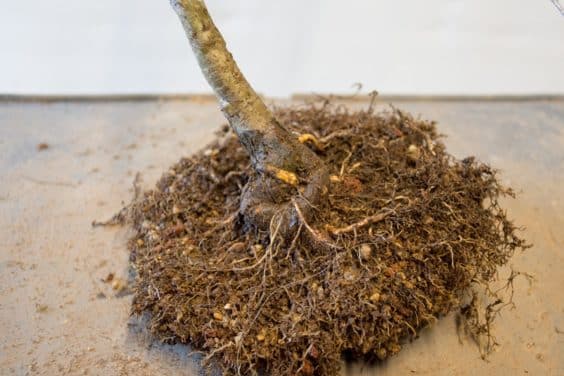
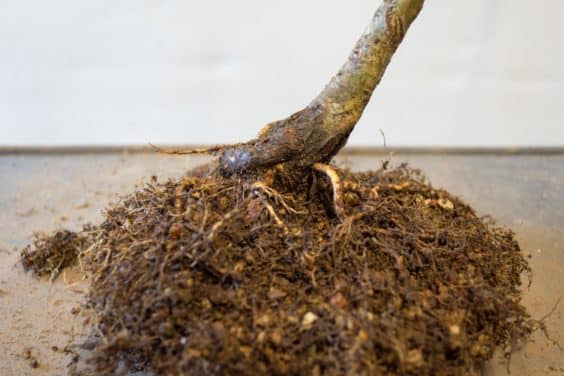
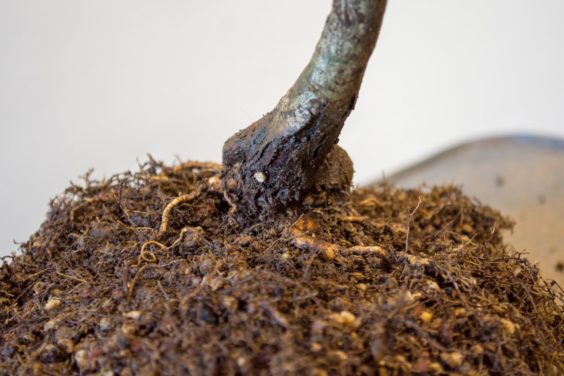
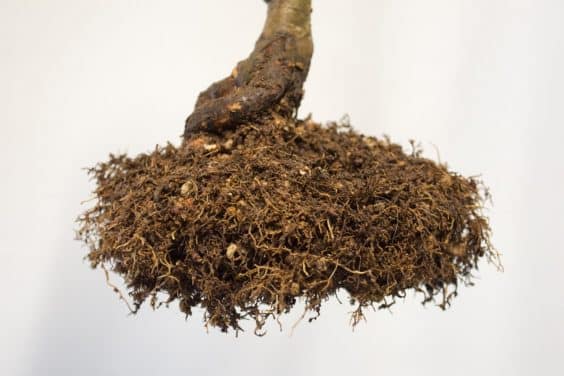
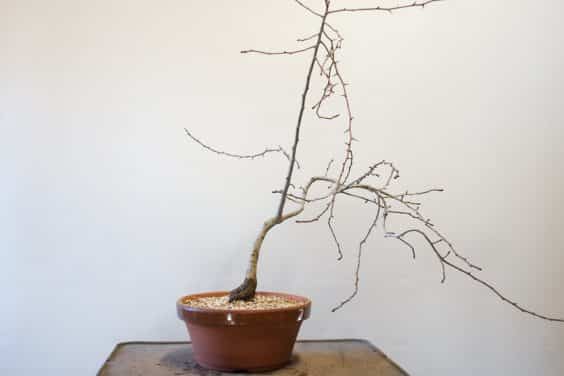
Mac McAtee says
Jonas, Do I understand correctly that you left the two crossing roots on the second Hawthorn? After the photo showing them, you don’t mention them again and none of the following photos show that area.
I have access to an area under a power line right of way that has numerous Hawthorn growing. I harvested one of them last spring and it’s doing fine if it makes it through the 4°morning we had yesterday. There are many more there to check out this spring and any info on Hawthorn is very much appreciated. Mac
Mac McAtee says
I forgot to mention that the power line right of way is bush hogged every three to five years by the power company and deer crop the young shoots non-stop. It makes for some very nice bonsai starter material Hawthorn and Winged Elm.
Jonas Dupuich says
Hi Mac, am looking forward to seeing more hawthorn bonsai out there – that’s great you have some nearby.
As for the crossing roots on the second tree, most of the trunk splits into these two roots which are somewhat fused together. As the root base flairs out a bit just below where they cross, I plan to leave the crossed pair and work from there. If this approach doesn’t work well, I might try a ground layer.
AlexV says
Great article Jonas! I have been growing a lot of material from seedling or cutting and have taken to repotting and bare rooting (for deciduous trees) every year for the first 3-5 years. To me part of the joy of starting with new material is the ability to remove problems with the roots before they start.
I have ended up throwing away several trees that had nice trunks and tragic roots. It always seems like if roots are given free reign for the first 2-3 years the nebari is ruined, or needs extensive correction.
Marty Weiser says
Jonas,
Were these originally grown in small pots that might lead the development of one or two major roots that circle or do you think this is a genetic habit of Hawthorn?
If it is the later, should we plan to really focus on the roots of hawthorn seedlings during the first couple of years to insure a a good surface root flare at the expense of trunk development? I am thinking of a less severe, but similar approach to the seedling cutting method applied to Japanese Black Pine.
I tend to repot Japanese Maple every other year in shallow pots from seed to develop a good spreading root base. As a result, the trunks are not thick, but I get good bases in this most likely easier species.
Jonas Dupuich says
Great question Marty. I don’t remember what pot the hawthorn’s were originally in, and I want to guess round based on the shape of the root, but it’s a bit odd that the lower circle is larger than the first. Regardless, yes, we should get the roots started on the right foot as early as possible and improve them every time we repot. Cutting the taproot early is a good start, and making smaller adjustments in subsequent repottings can help a lot.
The main thing to avoid? Letting a young tree go for several years near the beginning.
As for your maples, it sounds like you have a good program for them. If the roots are great, it’s relatively easy to create taper down the road.